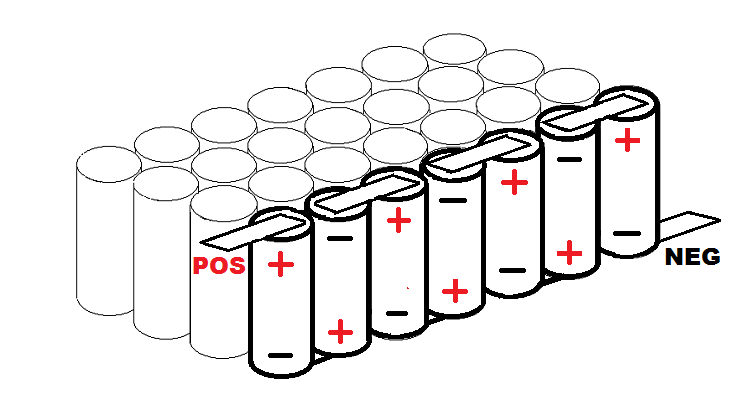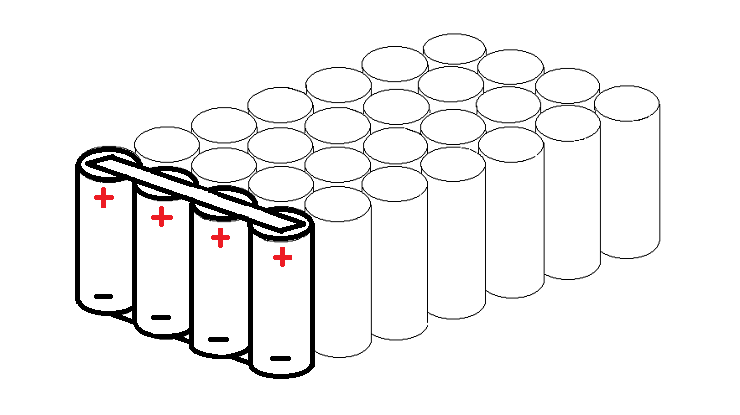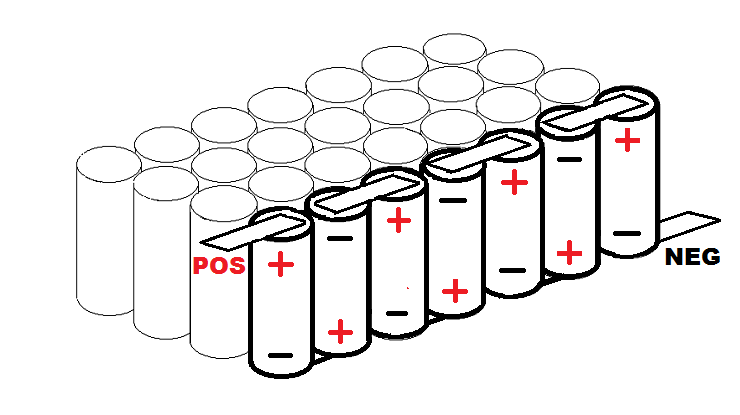eMark said:
In this diagram provided by spinningmagnets there are four "parallel cells" cells connected in parallel ...
In the above diagram there's room enuf for 7 groups of 4P cells amounts to 28 cells in parallel (parallel cells).
In this diagram provided by spinningmagnets there are seven "series cells" cells connected in series ...
In the above diagram there's room enuf for 4 strings of 7S cells amounts to 28 cells in series (series cells).
You do realize don't you that those are just the two aspects illustrated from the same 4P7S pack?
Room enough? 28 cells in series would make a 100+ volt pack!
28 cells in parallel would be 1S, and make a 3.7V pack!
You can't have both at once.
If these were prismatics, with only a single ring terminal on each post, a 7S4P pack, means there are four strings in parallel, each string at 7S.
Or if 4P7S, a single 7S string of 4P groups.
> as both parallel cells and series cells working together
YES you got it! When welded to more than one connection, none are just series "or" parallel cells, **every** cell is **both**
There are no cells that can be labeled with just one attribute. Therefore it is meaningless to ask how many there are of each!
> uniquely bonded in a relatonship that helps to keep all the cells balanced during charging and discharging
No again this is just gobbledygook
> the "Advantage Of The More The Better ?" ... being the more
as is that





